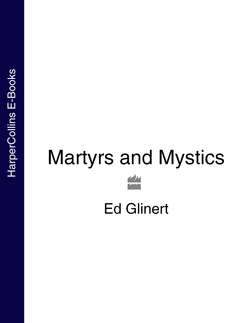Читать книгу Martyrs and Mystics - Ed Glinert - Страница 20
Primrose Hill
ОглавлениеWilliam Blake, walking here early in the nineteenth century, had a vision of the ‘spiritual sun, not like a golden disc the size of a guinea but like an innumerable company of the heavenly host crying “Holy, holy, holy” ’.
According to the fifteenth-century soothsayer Mother Shipton, if Primrose Hill were ever surrounded, the streets of London would become rivers of blood.
→ Intrigue involving James II at St James’s Palace, p. 94
The Popish Plot
One of the most infamous religious conspiracies in London history, the Popish Plot unfolded after the body of Sir Edmund Berry Godfrey, MP, JP and well-known Protestant, was found on Primrose Hill in October 1678, impaled on his own sword.
As speculation mounted about who could have murdered Godfrey, the conspiracy theories began to emerge. Perhaps the murder was connected with an anonymous pamphlet, believed to have been written by the poet Andrew Marvell, which suggested that the Catholics were plotting to take control of London, and make their religion that of England?
Back in August the king, Charles II, had been told by his chemist, Christopher Kirkby, while walking in St James’s Park, that the Catholics were planning to massacre Protestants, burn down the staunchly Protestant City of London (as the papists had been accused of doing after the 1666 Fire), overthrow the government, and replace Charles with his brother, the Catholic Duke of York (later James II).
Kirkby told the king he knew the names of assassins who planned to shoot him. If that failed, the queen’s physician would poison him. Now Godfrey was dead, so perhaps the putsch had begun. The House of Commons was searched in case another Gunpowder Plot was imminent. The grapevine buzzed with talk of how the letters of Godfrey’s name could be rearranged into the anagram ‘Died by Rome’s revenged fury’. A cutler made a special ‘Godfrey’ dagger. On one side were the words ‘Remember the murder of Edmund Berry Godfrey’, on the other, ‘Remember Religion’. He sold 3,000 in one day.
A cleric called Titus Oates told the authorities that there definitely was a Popish Plot to take over the country. He made more than forty allegations against various Catholics, and even accused the queen’s physician and the secretary to the Duchess of York of planning to assassinate Charles II. Soldiers were seconded to help Oates root out these saboteurs, and on 3 December 1678 the Duke of York’s former secretary, Edward Colman, was sentenced to death.
Parliament passed a bill barring Catholics from membership of both Houses (a law not repealed until 1829), while Oates received a state apartment in Whitehall and an annual allowance of £1,200. Far from being sated with his illicitly gained power, Oates succumbed to megalomania. He claimed assassins would soon shoot the king with silver bullets causing wounds that would not heal. But public opinion began to turn against him after he had fifteen mostly innocent men executed. Oates was eventually arrested for sedition (accusing the Duke of York of treason) and fined £100,000.
When the Catholic Duke of York took the throne in 1685 as James II he sought revenge. Oates was sentenced for perjury and given a life term. He was removed from his cell wearing a hat emblazoned with the slogan ‘Titus Oates, convicted upon full evidence of two horrid perjuries’ and put into the pillory in Westminster so that passers-by could pelt him with unwanted food. William of Orange pardoned him in 1688.
It later transpired that Godfrey had been murdered not on Primrose Hill but at Somerset House, by a silversmith called Prance, hired by Titus Oates and his associate Israel Tongue, and that the body was then taken to Primrose Hill.
